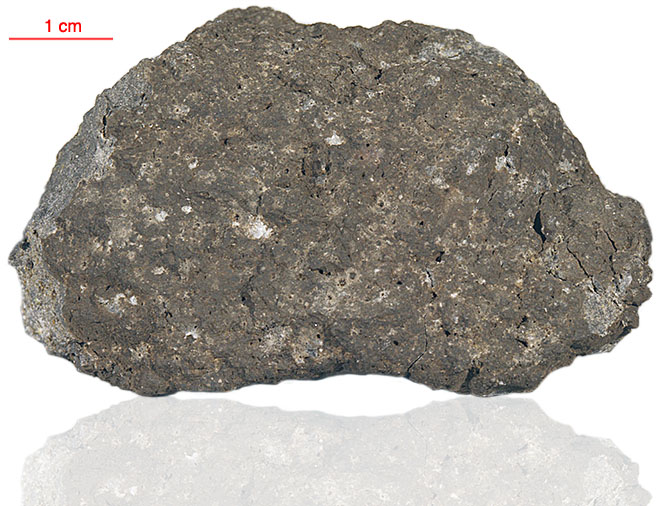
Fact sheet
77115 was sampled as blue-grey breccia with a matrix that incorporates a large white clast (77215). It contains obvious large lithic clasts, as seen in hand specimen, and contains numerous small lithic and mineral clasts in the matrix. The texture and chemical composition are similar to that of sample 77075. The fine-grained matrix of 77115 consists largely of an interlocking network of anhedral and lath plagioclase surrounded by pyroxene in a micropoikilitic texture. The pyroxene oikocrysts are approximately 25-30 microns and the matrix plagioclase is ~15 microns. Equant grains of olivine are scattered throughout the matrix. Clusters of ilmenite platelets and other minerals are found in the mesostasis between pyroxene oikocrysts. Plagioclase feldspar clasts dominate rotation 1. Rotation 2 shows a part of a light matrix breccia - possibly part of white clast 77215?
The sample weighed 115.9 grams before analysis and has been dated between 3.83-3.99 billion years (Ar/Ar).
Further details of this and other Apollo samples are here: http://curator.jsc.nasa.gov/lunar/
Apollo 17, the final manned landing mission, had two objectives: to obtain samples of ancient rocks from the lunar highlands and to look for evidence of younger volcanic activity on the valley floor.
This small Collection contains material deriving from both periods, including igneous rocks around 4.3 billion years old from the lunar highlands as well as younger volcanic samples dating from about 3.6 billion years ago.
Apollo 17 was launched on 7 December 1972.






